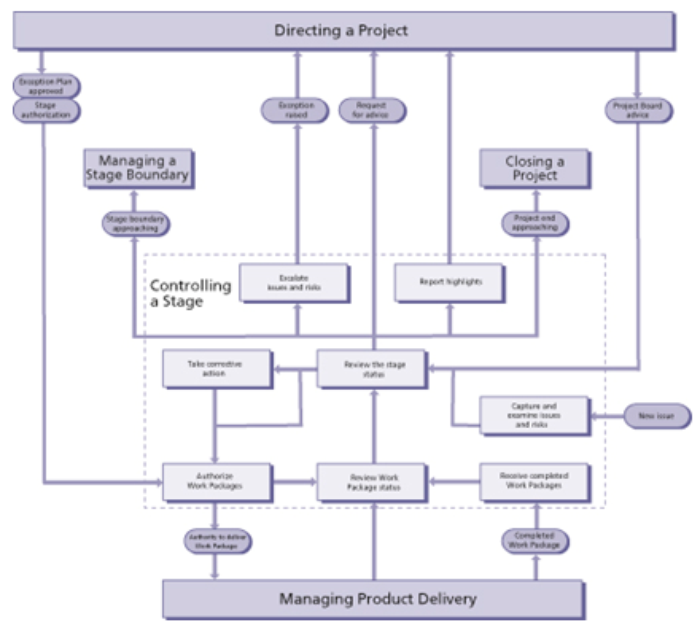PRINCE2 2009 - Controlling a stage part 3
of the Cabinet Office under delegated authority from the Controller of HMSO.
Context
The Controlling a Stage process describes the work of the Project Manager in handling the day-to-day management of the stage.
This process will be used for each delivery stage of a project.
Towards the end of each stage, except the final one, the activities within the Managing a Stage Boundary process (see the section covering ‘Managing a Stage Boundary’) will occur.
The Controlling a Stage process is normally first used after the Project Board authorizes the project, but it may optionally be used during the initiation stage for large or complex projects with a lengthy initiation.
Work Packages are used to define and control the work to be done, and also to set tolerances for the Team Manager(s).
In the case where the Project Manager is fulfilling the Team Manager role, Work Packages should still be used to define and control the work of the individual team members being assigned work.
Where this is the case, references to Team Manager throughout the Controlling a Stage process should be regarded as references to the individual team member being assigned work.
Central to the ultimate success of the project is the day-to-day control of the work that is being conducted. Throughout a stage, this will consist of a cycle of:
- Authorizing work to be done
- Monitoring progress information about that work, including signing off completed Work Packages
- Reviewing the situation (including that for product quality) and triggering new Work Packages
- Reporting highlights
- Watching for, assessing and dealing with issues and risks
- Taking any necessary corrective action.
Towards the end of the last stage, the Closing a Project process (see the section covering ‘Closing a Project’) will be invoked.
PRINCE2® 2009 describes project monitoring within the Progress theme.
The purpose of the Progress theme is to establish mechanisms to monitor and compare actual achievements against those planned; provide a forecast for the project objectives and the project’s continued viability; and control any unacceptable deviations.
Two of the principles of PRINCE2 are managing by stages and continued business justification.
The Progress theme provides the mechanisms for monitoring and control, enabling the critical assessment of ongoing viability.
[see Progress - Purpose]
PRINCE2® is a Registered Trade Mark of the Office of Government Commerce in the United Kingdom and other countries.
Managing Successful Projects with PRINCE2 - 2005 edition
Managing successful Projects with PRINCE2 – 2009 edition
Directing Projects with PRINCE2.
plus:
The Complete Project Management package.
And much more besides - at a fantastic price.



